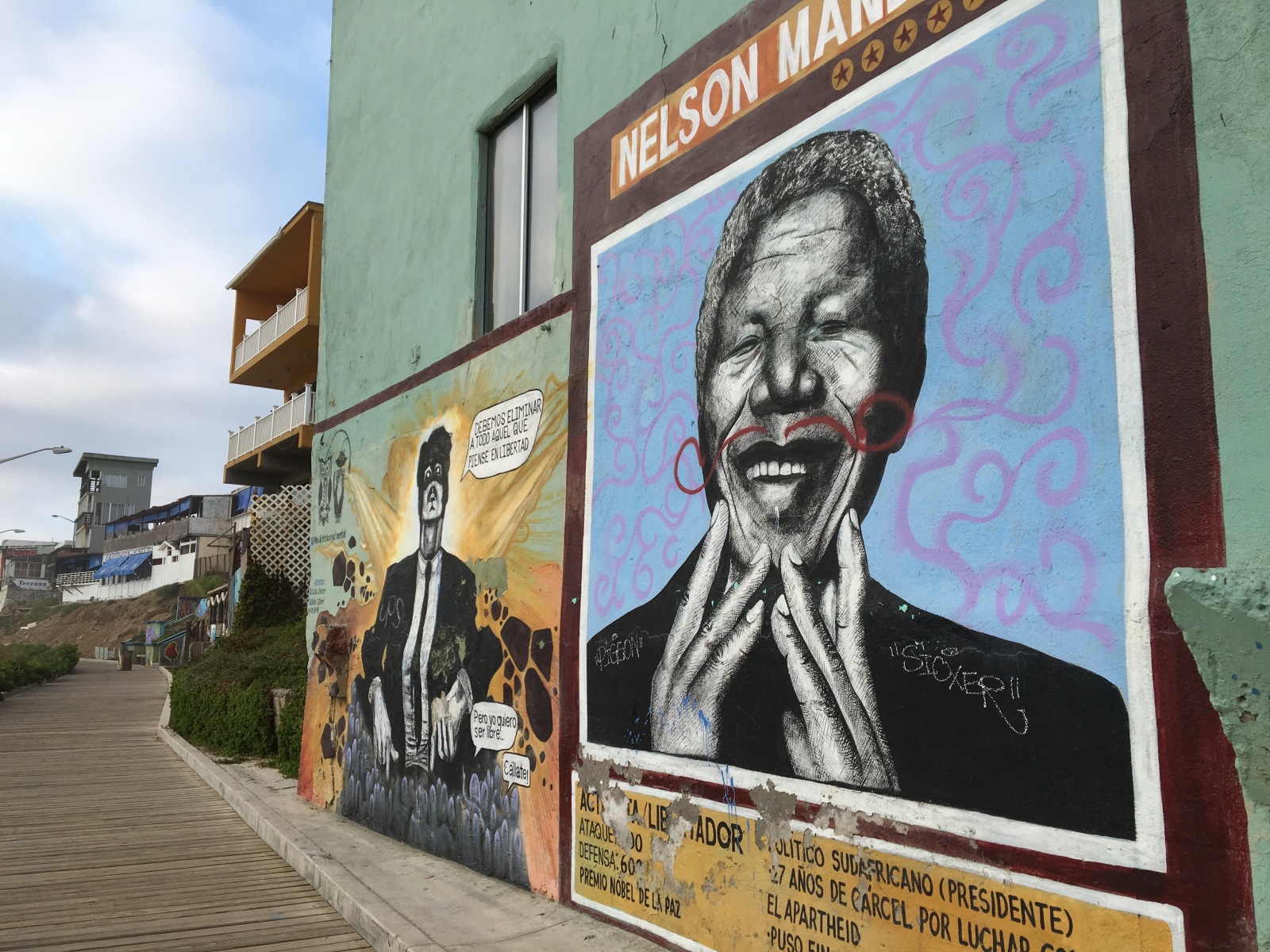In late October, a group of all-female street artists called Morivivi painted a mural of two nude women along the side of a freeway underpass in Puerto Rico. The artists were given permission to paint the mural by the appropriate government agencies. The image of the two black Latinas, eyes hidden behind their uplifted arms and dark skin kissed by butterflies, was done to raise awareness for sexual violence. Puerto Rico has a huge problem with domestic violence; the US territory has the highest per capita rate of domestic violence in the world. With a total population of 3.5 million people, nearly 12,000 incidents of domestic violence were reported in 2013, a number that experts say underestimates the actual total episodes of violence as fewer than half are reported. This trend of underreporting domestic violence is most likely the result of a lack in faith of the authorities to keep them safe or help them. The system does little to protect these women; only seventeen percent of women killed by their intimate partners had orders of protection, two percent had orders of arrest against their murderer, and twenty-five percent had reported previous episodes of domestic violence to the police. In 2011, the number of women killed by their partners was six times higher than in Los Angeles, a city whose population mirrors Puerto Rico’s and is notorious for violence. Morivivi argues that this pattern of abuse is the product of a patriarchal society that simultaneously sexualizes and censures women’s bodies. Puerto Rican men may beat their partners in their living room while a nude woman, photo-shopped to perfection, glistening on the TV screen sells them a popular soft drink – a cheap but successful marketing ploy. If a woman’s body cannot be made into a commodity to make a profit, it is vilified. Morivivi’s goal is to educate: “Nudity shouldn’t be taboo. If we can’t see and appreciate the image of a nude woman naturally and with respect, how are we going to respect every woman in our own lives?” So in order to disrupt society’s impossible physical standards for women, the artists have portrayed two “real” women in their mural. The two women combat sexism with bodies as voluptuous and dark and imperfect as the women of Puerto Rico who “we [Morivivi and the world] must accept and protect.” Although responses to the mural had been overwhelmingly positive, it had also received loud criticism by those who found this public display of female nudity inappropriate and offensive. So despite Morivivi’s efforts to raise awareness, ironically, or perhaps predictably, a few additions were made to the mural soon after its completion; overnight, the two women acquired bras and panties of white paint. Although the crudely painted coverings were no doubt meant to discourage and humiliate, the women of Morivivi are undeterred. They don’t see the additions as vandalizing their art and message but as a form of censorship – a response that was directly triggered by their piece. The undergarments have given the mural and Morivivi even more publicity, with women posing shirtless next to the mural and posting their symbolic gesture on social media.
In the eyes of Morivivi, the mural has became a “true work of art” by creating meaningful dialogue concerning domestic violence and art and censorship. The bras did not ruin their work but gave validation to Morivivi’s message and philanthropy: women are being killed at a disturbing rate in Puerto Rico because of sexism imbedded within a society that demonizes women’s bodies and Morivivi has created a work of art that reflects this message and this censorship of their work supports their claim. The “interventions” – as so the artists call the painted undergarments – have created an artistic conversation that has elevated the mural’s artistic worth. The women of Morivivi have reacted to this event with class. They planned on creating a new mural in honor of International Day for the Elimination of Violence against Women on November 25. Despite my research, I was not able to find any articles concerning whether or not they had the new mural done by then. Or maybe they did mention what ended up happening but most of the articles were in Spanish and my Spanish is muy malo lo siento.mur
#mural #domesticviolence #morivivi






